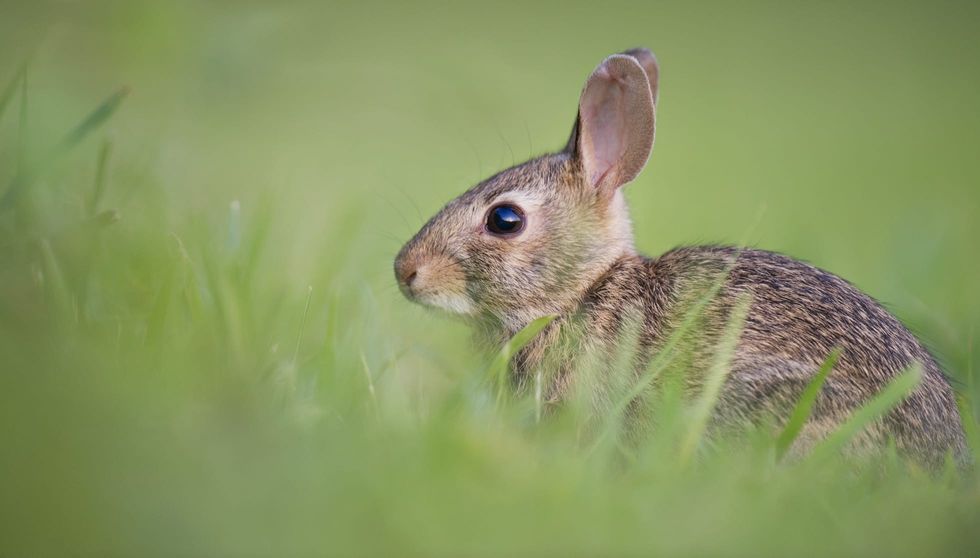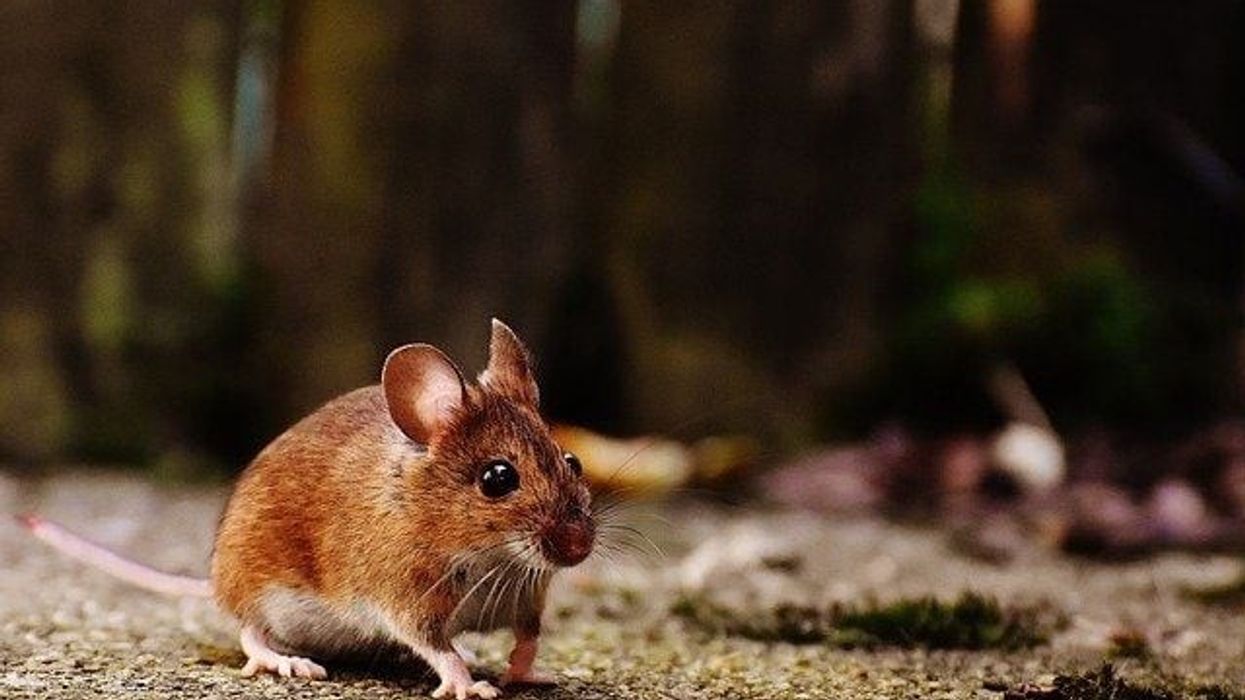The brush rabbit (Sylvilagus bachmani) belongs to a cottontail rabbit species with 13 subspecies, and they generally have a small body and short tail. They are also shy and secretive. When they are content, they can 'purr .' They roll around and jump when they are in a good mood.
Brush rabbits can run in a zig-zag pattern at around 25 mph (40.2 kph) when chased by a predator. Might we add, they look adorable!
To find out more interesting facts and information about other animals, you can also check our guides on European rabbit facts and brown hare facts for more enriching and mind-blowing facts and guides.
Brush Rabbit Interesting Facts
What type of animal is a brush rabbit?
The brush rabbit (Sylvilagus bachmani) is a small species of rabbit with short legs and short tails. They usually stay in brushy covers and grasslands.
They are small cottontail and are generally found in the western coastal regions of North America. One subspecies of the brush rabbit, known as Riparian brush rabbit, or Sylvilagus bachmani riparius, is found near San Joaquin River and San Joaquin Valley is listed as an Endangered species.
What class of animal does a brush rabbit belong to?
Brush rabbits belong to the Mammalia class, and like other mammals, they have mammary glands to feed the young ones.
How many brush rabbits are there in the world?
Brush rabbits are found mainly in Baja California in North American regions and are small cottontail rabbits and are not listed under any conservation list. The population of brush rabbits is well under control.
There are 13 recognized species of brush rabbits. Still, one of their subspecies, the Riparian brush rabbits or Sylvilagus bachmani riparius, are listed as an Endangered species, and there are only 330-600 Riparian brush rabbits in the San Joaquin coastal regions and are reared by the United States Fish and Wildlife Service.
The total population of brush rabbits in the world is unknown. There are 110,000 Riparian brush rabbits in the world currently.
Where does a brush rabbit live?
The Western brush rabbit is generally found in brushy and brushy cover and vegetation habitats.
Their home ranges start from Western Coastal Regions of North America, including the Columbia River, and go southward to the tip of Baja California to the east of cascade and the Sierra Nevada ranges. Brush rabbits are often referred to as western brush rabbits primarily because of their habitat.
Riparian brush rabbits are found in the San Joaquin River and are generally taken care of by the United States Fish and Wildlife Service, as they are an endangered species.
What is a brush rabbit's habitat?
The Western brush rabbits' habitat ranges from brushy and bushy grasslands, covers, thick vegetation to bushy deserted areas of California. They rarely live in bushy areas for a long time as the bushes provide their species with good shelter and protection from predators. They can climb trees if they feel threatened or if they are scared.
Who do brush rabbits live with?
They are very wary and secretive rabbits. They usually live in individual home ranges. The home range of a male is usually bigger than the average home range of a female.
How long does a brush rabbit live?
An average lifespan of a brush rabbit is around two years. A majority of the subspecies of brush rabbits have a lifespan range of two to two and a half years.
How do they reproduce?
They are polygynous. That means that a male rabbit can mate with two or more female rabbits during the breeding season.
In some regions like California, the breeding season is from December until May or June. In Oregon, the breeding season is from February to August. They use burrows of other animals to give birth to three or four young ones in one year.
The gestation period is 27 days generally. Young ones are born and remain in the nest underground for 14 days. After 10 days, they open their eyes.
The mothers feed them at night. In four to five months, they reach maturity, and from the next season, the rabbits are ready to breed to increase the species' population.
What is their conservation status?
There are 13 species of brush rabbits, and most of their population falls under the Least Concern category of the IUCN Red List, except one subspecies of the brush rabbit. It is called the Riparian brush rabbit, and it is listed as an Endangered species on the Red List of IUCN.
The Riparian brush rabbit population is currently taken care of by United States Fish and Wildlife Service.
Brush Rabbit Fun Facts
What do brush rabbits look like?

Brush rabbits are small to medium in size with a short tail that looks like a cottontail. Their fur is dark and can consist of colors like steel gray, black, orange, and brown. Their ears are small with a pointed structure. Their tail is small and white underneath. They look absolutely adorable.
How cute are they?
Brush rabbits are very cute. They have an exciting range of colors on their fur and have a small size giving them an uber-cute appearance.
How do they communicate?
They generally communicate through verbal sounds and actions. If they feel threatened or scared, they can quickly climb trees to protect themselves. When they feel insecure, they thump their feet and even squeal and cry when they are in pain or scared.
How big is a brush rabbit?
Brush rabbits are small to medium-sized cottontail rabbits, and their length can range from 11-14.6 in (28-37 cm) in size.
How fast can a brush rabbit run?
Brush rabbits can run really fast as they have a short tail and body that helps them run fast and hide in tunnels and holes when chased by a predator or climb a tree. They can run 25 mph (40.2 kph) when chased by a predator like weasels, bobcats, or coyotes.
How much does a brush rabbit weigh?
Brush rabbits are generally quite small in size, and their weight can range from 1-2 lb (0.5-0.9 kg).
What are the male and female names of the species?
A female brush rabbit is called a doe, and a male brush rabbit is referred to as a buck.
What would you call a baby brush rabbit?
A baby brush rabbit is referred to as a kitten or a bunny in its natural habitat.
What do they eat?
Brush rabbits are generally herbivores and eat grasses, plant species, leaves, forbs, scrub, blackberries, wild rose, green clover. Their diet can vary according to the season. Their favorite food is green clover.
Are they friendly?
They are quite secretive and wary and keep themselves confined with individual home ranges and run when encountered with any threat or predator. They are not really friendly.
Would they make a good pet?
As brush rabbits are a wild species of rabbits and are very shy, wary, and secretive, they won't make that of a good pet. In many parts of America, it's illegal to keep a wild rabbit as a pet.
Did you know...
One of the best brush rabbit facts for kids is that a brush rabbit can sleep for eight to nine hours a day and is nocturnal.
There are eight rabbit species that are common in California. The dessert, jack-rabbit, black rabbit, and brush rabbit form the majority in Southern California.
All of the brush rabbit species are considered as Least Concern except Riparian brush rabbit Sylvilagus.
Why is the brush rabbit endangered?
Most subspecies are listed as Least Concern, with the exception of one. This subspecies is of the brush rabbit, which is also known as Riparian brush rabbit.
It is considered an endangered species. Riparian brush rabbits are endangered because of the excess deforestation and loss of habitat in the San Joaquin region and rapid construction of houses, cities, and water dams for flood control.
This limited the Riparian brush rabbit number to just 300-600. Efforts are being made to save the population of the Riparian brush rabbits in the wild.
Saving the brush rabbit
The United States Fish and Wildlife Service has launched a proper recovery plan to protect and increase the population of the Riparian brush rabbits in their natural habitat. Restoring, vaccinating, and connecting the sections of Riparian brush rabbit is done to conserve their habitat and increase the population of the Riparian brush rabbit.
Let's hope that this solution to ensure that the Riparian brush rabbit does not become extinct is fully effective.
Here at Kidadl, we have carefully created lots of interesting family-friendly animal facts for everyone to discover! For more relatable content, check out these bay cat facts and polecat facts for kids.
You can even occupy yourself at home by coloring in one of our free printable brush rabbit coloring pages.









